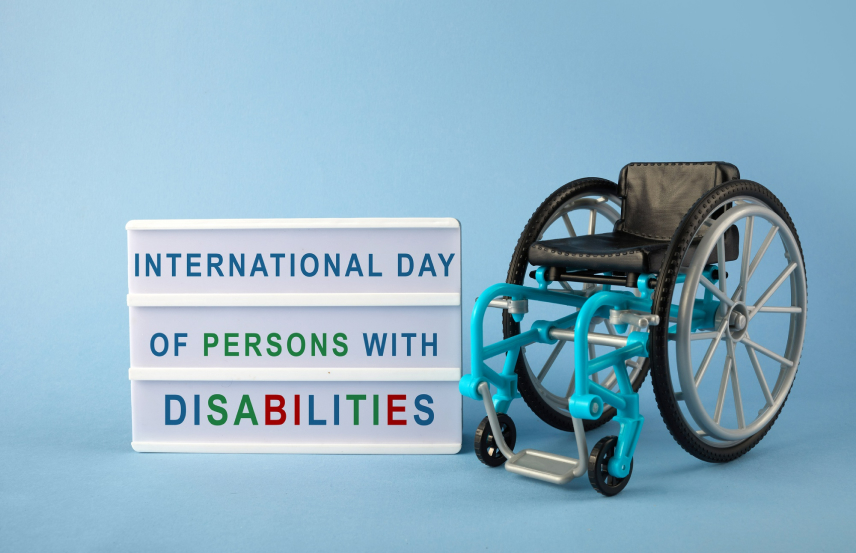International Day of Persons with Disabilities

December 3rd marks the International Day of Persons with Disabilities (IDPD), a day dedicated to promoting the rights and well-being of people with disabilities worldwide. As we celebrate this important day, it’s crucial to reflect on the progress we’ve made in web accessibility and consider the future of creating a more inclusive digital landscape. The rapid evolution of technology presents both challenges and opportunities, making it essential for businesses, governments, and developers to prioritize web accessibility as a core element of their digital strategies.
The Current State of Web Accessibility
Web accessibility has come a long way, thanks to guidelines like the Web Content Accessibility Guidelines (WCAG), which provide a set of standards for making web content accessible to people with disabilities. Despite these advancements, many websites still fail to meet basic accessibility standards, creating barriers for users with disabilities, including those with visual, auditory, cognitive, and motor impairments. The rise in digital accessibility lawsuits highlights the ongoing need for compliance and the consequences of neglecting inclusive design.
While some organizations have made significant strides in enhancing accessibility, many still struggle with implementation. Common issues such as poor color contrast, missing alternative text for images, and non-functional navigation elements continue to prevent full access to digital content for millions of people with disabilities.
Why Accessibility Matters More Than Ever
The future of web accessibility is not just about compliance; it's about recognizing the value of inclusivity in a diverse digital world. As technology becomes increasingly integral to our daily lives, ensuring that digital spaces are accessible to everyone is essential for equal participation in society. Accessible websites provide benefits beyond compliance, including improved user experience, broader audience reach, and enhanced brand reputation.
For businesses, accessible websites can improve search engine optimization (SEO), reduce bounce rates, and increase user engagement. Accessibility features such as captions, transcripts, and clear navigation not only support users with disabilities but also enhance usability for all visitors, including those using mobile devices or with slower internet connections.
Emerging Trends in Web Accessibility
- Artificial Intelligence (AI) and Machine Learning: AI-powered tools are beginning to transform web accessibility by providing real-time solutions, such as automated captioning, voice recognition, and predictive text. These technologies can help make websites more adaptive and responsive to individual user needs.
- Inclusive Design Principles: The shift towards inclusive design is reshaping how websites and applications are developed. Rather than retrofitting accessibility features, inclusive design integrates accessibility from the start, ensuring that all users have equal access from the ground up.
- Personalization and Adaptive Interfaces: Advances in technology are enabling more personalized user experiences. Adaptive interfaces can adjust content presentation based on the user’s preferences, making navigation and interaction easier for those with specific accessibility needs.
- Voice and Gesture-Based Navigation: The rise of smart assistants and gesture-controlled devices is opening new doors for web interaction. These technologies allow users to navigate and control digital content in ways that go beyond traditional mouse and keyboard inputs, offering greater accessibility for users with limited mobility.
Making Accessibility a Universal Standard
The future of web accessibility lies in making it a universal standard, embedded in every aspect of digital design and development. This involves more than just adhering to legal requirements; it means embracing the principles of inclusivity and recognizing the impact of accessible design on society as a whole.
Governments, businesses, and developers must work collaboratively to create a web that is truly accessible. This includes ongoing education and training, investing in the latest accessibility technologies, and actively seeking feedback from users with disabilities to continuously improve digital experiences.
As we observe the International Day of Persons with Disabilities, let’s commit to building a more inclusive future for all. The progress we make in web accessibility today will shape the digital landscape of tomorrow, ensuring that everyone, regardless of ability, can fully participate in the online world.
Whether you are a business owner, developer, or digital strategist, now is the time to prioritize accessibility. By embracing accessible design, we can create digital spaces that are not only compliant but also welcoming, usable, and empowering for all users.
Are you ready to make your website accessible? Contact us to learn more about how we can help you achieve compliance and create an inclusive digital experience.
Read Also: 5 Most Common Website Accessibility Barriers
